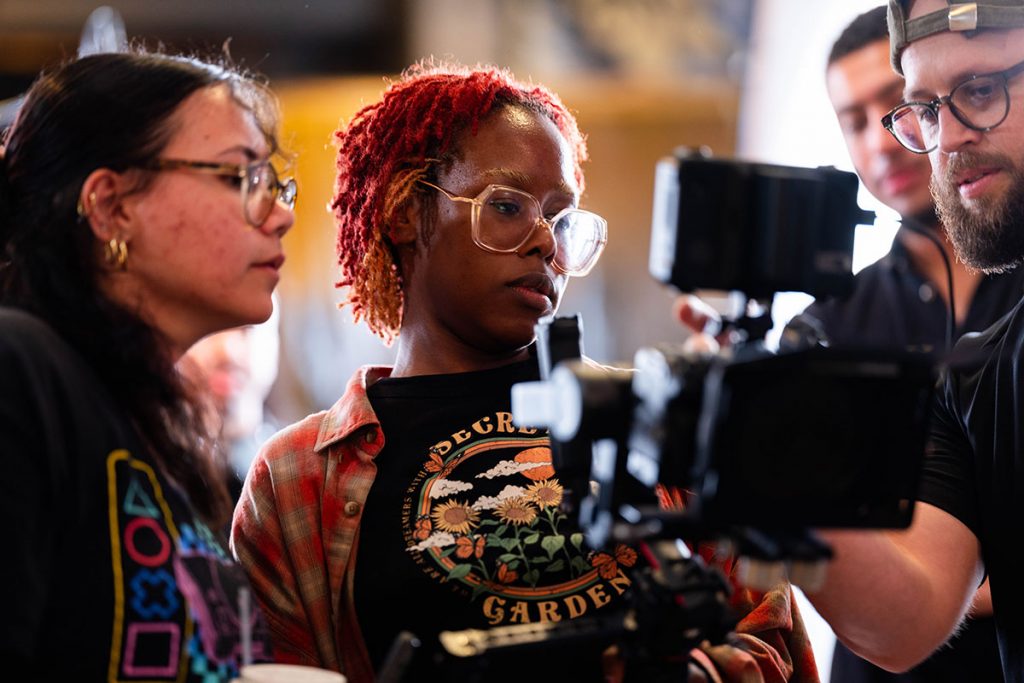Training A New Generation of Storytellers: Wide Angle Youth Media’s Video Production Process
April 15, 2024 | Hannah Shaw, Lacee Cottman | Republished from Smithosian
It’s an October day in Baltimore. We’re in the studio of tattoo artist Gina Takaoka, who perches on a stool in her dimly lit front parlor. Three cameras on tripods ring her, surrounded by the film crew, made up of film production apprentices in their twenties and the group of professionals who mentor them.
Directing the crew is Brandon Towns, a twenty-five-year-old Baltimore native. Over the last hour, he has guided the team as they placed cameras, selected lenses, and set the lighting. Kamaria Avery, also twenty-five, consults her mentor before lowering her tripod and sliding right to catch Gina in profile and capture the delicate Japanese-style tattoos on their arm. One of the early questions the apprentice interviewer will ask Gina is how they manages to translate art to dark skin types as well as light. The documentary’s producers and editor plan a story focused on Gina’s career, to make their work a gateway into the positive things their community has to offer.
After one last look around the room, Brandon asks the crew to settle. Some in back have been discussing upcoming freelance gigs, how they balance those opportunities with school. The camera crew glides to their positions. The audio engineers pull on headphones. Now, the parlor is so quiet you can hear the soft hiss of car tires traveling the road outside. Brandon nods to the cameras.
“Roll camera.”
*****
Everyone has a story to tell, yet popular media seems to suggest that some voices matter more than others. Video media helps us understand ourselves and others, connecting us to history, culture, and values. It is imperative that this dominant form of storytelling represents the full spectrum of people in the United States. While diversity in the media production industry has increased, Black, Indigenous, and other People of Color (BIPOC) individuals only represent thirty percent of directors while constituting nearly forty-three percent of the U.S. population in 2021. Representation behind the scenes is vital to creating content that reflects the lived experiences of diverse audiences.
At Wide Angle Youth Media, a media arts education nonprofit in Baltimore, youth workforce training programs aim to diversify the industry. Wide Angle’s creative apprentices have the opportunity to amplify stories they value, sharing them with the world in a way that they find fulfilling. Throughout the program, apprentices and interns build professional portfolios and reels, develop a competitive résumé, connect with a network of media creators, and complete industry-standard training that provides them with the technical foundation needed for a career in the media industry.
Participants go on to work in various production positions; some have even established their own companies. Thanks to a partnership with the Alliance for Media Arts + Culture and their national Arts2Work initiative, over the past three years, Wide Angle established a federally registered apprenticeship program, making Maryland the first state to register apprenticeships in digital media and creative technologies. Wide Angle currently hosts three registered apprenticeships, creating a model implemented in other states around the country.
To date, one hundred percent of Wide Angle’s interns and apprentices have been enrolled in college and/or had other employment while in the program. Eighty-five percent of individuals who completed the program went on to job placements. These programs offer a way for young Baltimore creatives to get professional training that targets employment in the film industry. For those who find their heart lies elsewhere, they have gained essential tools to find professional work in other fields.
Collaboration and workforce development opportunities are essential to a Wide Angle apprentice’s professional experience. In this story, we’ll introduce you to three emerging creatives on our team—Brandon Towns, Kamaria Avery, and Jeffrey Obike—and take you along as they learn the necessary skills to be successful professionals in the industry.

Insight into Pre-production
Brandon Towns has always had an artsy spirit. Eleven years ago, he began his journey at Wide Angle in a high school introduction to digital photography program. During his sophomore year at Morgan State University, he began freelancing for the organization as a photographer and producer.
“I was nineteen using $20,000 equipment!” Brandon exclaims. “That’s not something that a lot of people can say.”
Freelancing turned into a part-time job as a productions apprentice. Since then, Brandon’s growth as a creator has been tremendous. We attended his shoot for his personal documentary project featuring tattoo artist Gina Takaoka to dive into the pre-production process.
“A lot of people look at tattoos as, ‘Oh, people just want to destroy their skin’,” Brandon mentions. “But body markings have been part of history and used for all types of reasons.” Tattoo art has a history dating back over 5,000 years and has its own links to storytelling. Today, people often view light skin as the default canvas. Gina dispels that myth by specializing in tattooing on a spectrum of skin tones. “There’s this misconception that people of color—especially Black people—can’t get vibrant, colorful tattoos,” Brandon says. “Gina’s work debunks that whole ideology. That’s why I chose to go to them.”
Gina provided a comfortable tattooing experience for Brandon. During their sessions, the two created a special bond. Inspired by Gina’s passion for creating valuable pieces that clients from marginalized communities would treasure, Brandon was inspired to create a documentary highlighting Gina’s artistry and character.
“Their whole mission is to help people feel better in their skin.” Brandon emphasizes. “Even from my first tattoo session with them, my experience working with Gina was eye-opening. I wanted to make a piece for them to showcase and promote their work without making them out to be a savior, but to show how their care is essential.
“The story came to me, and it wouldn’t be as genuine if I didn’t have some connection to Gina,” he continues. “You can be a supporter, but every story isn’t yours to tell.”
Whether storytelling through ink or video, it takes creativity, vision, and passion to push your field in a new direction and self-awareness to understand that you have an important narrative to share. The stories we see on screen tell us which stories matter and which are ignored in our society. Only 2.5 out of 10 show creators in digital scripted TV are people of color. In order to share authentic representations of under-represented people and stories in the media, we need more diversity in leadership roles.
Click on the photo gallery below to learn more about Brandon’s pre-production process for this project.
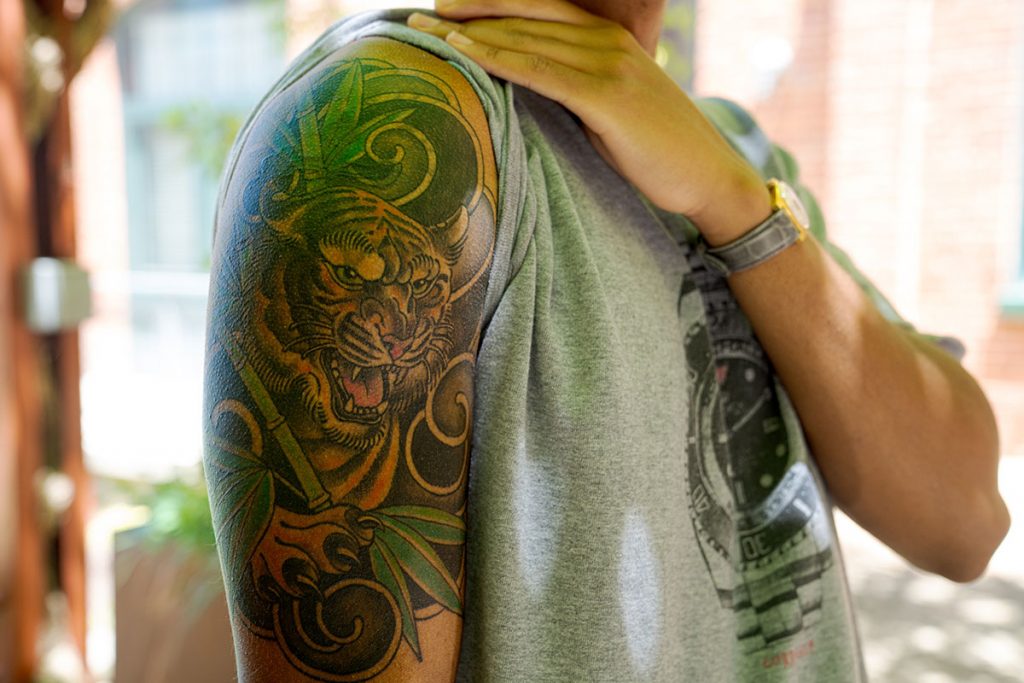
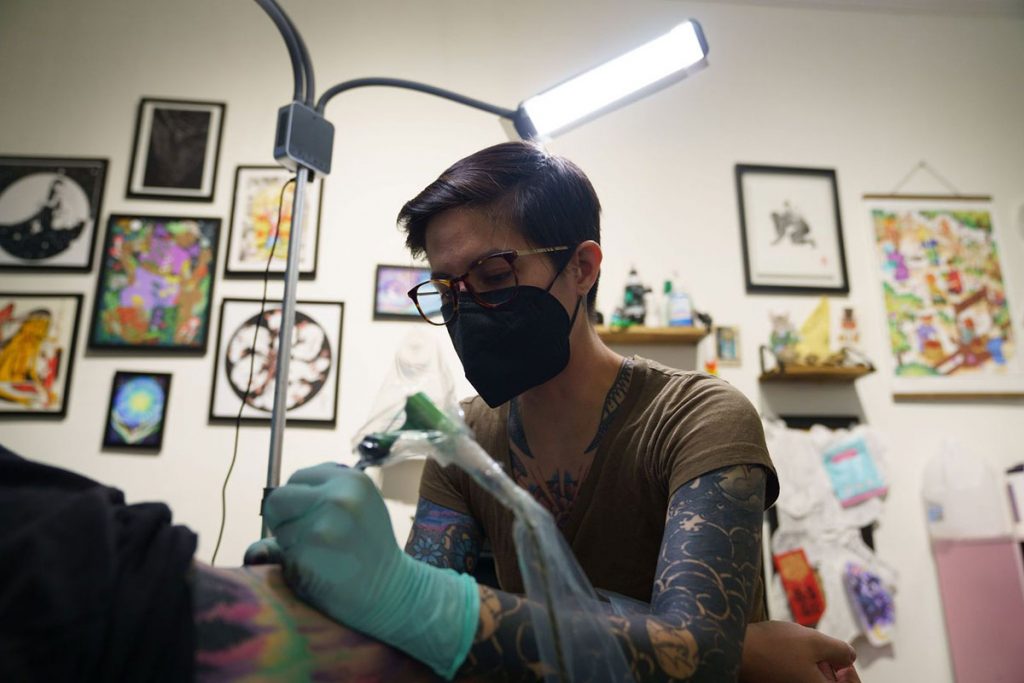
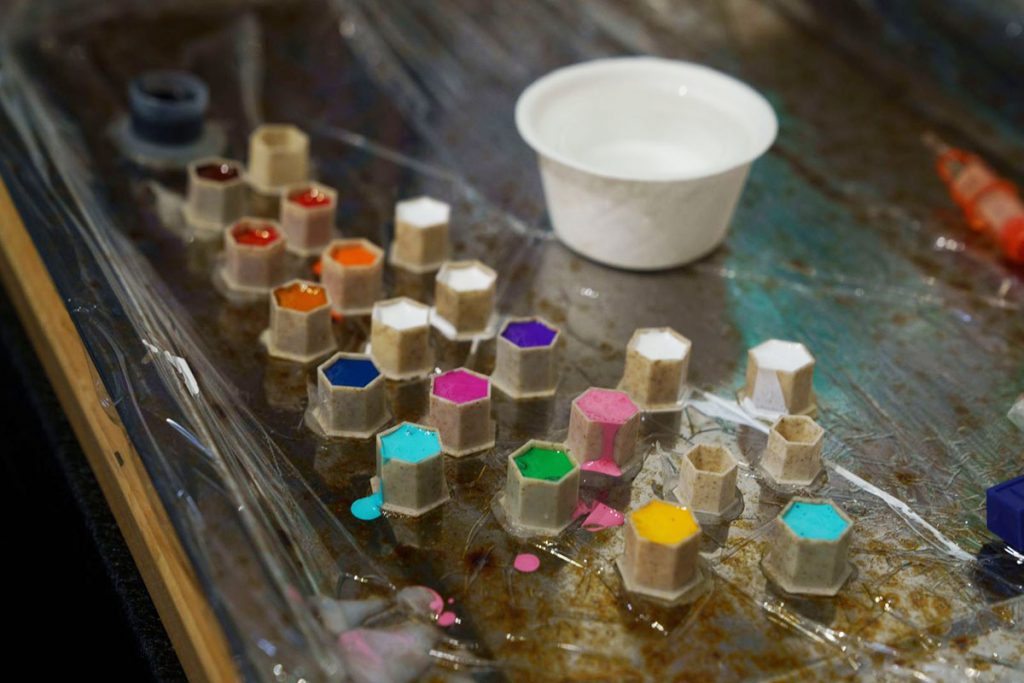
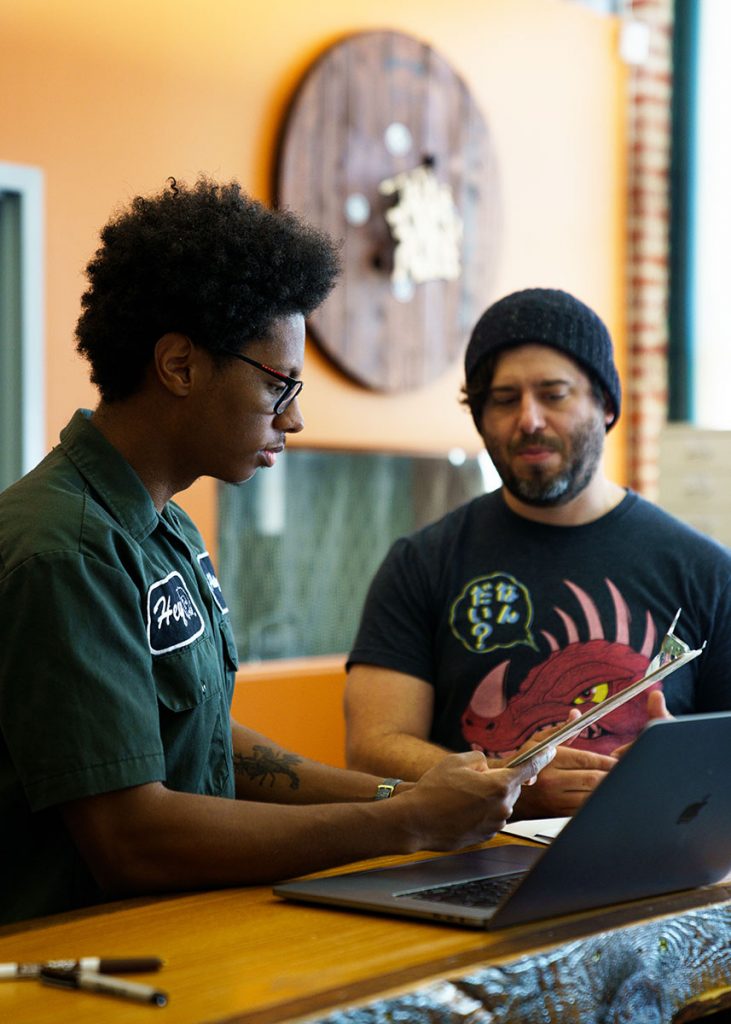
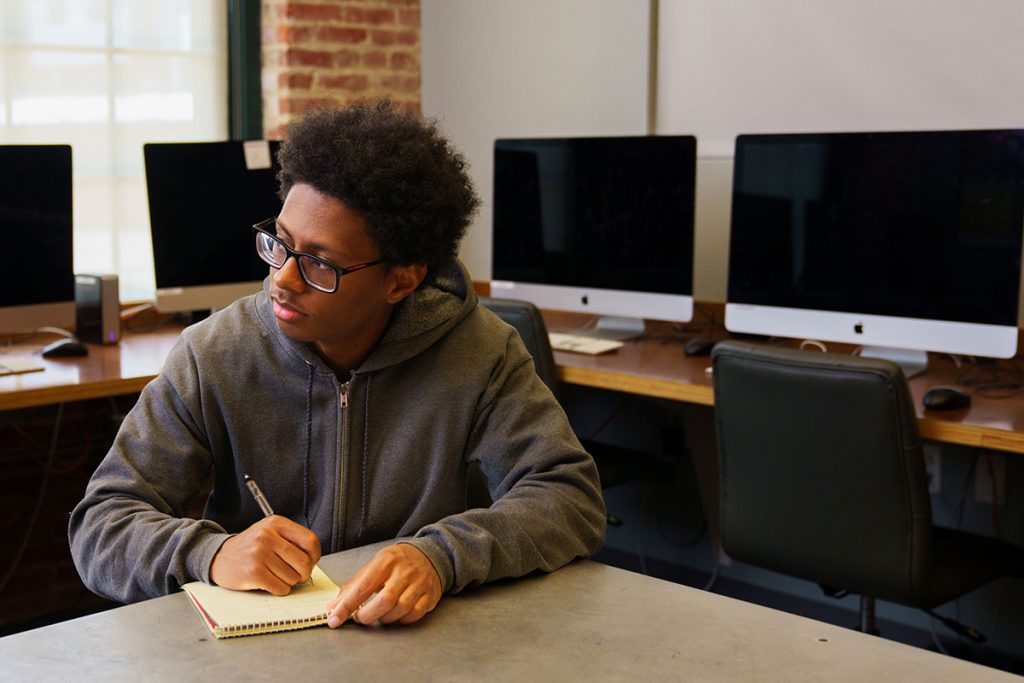
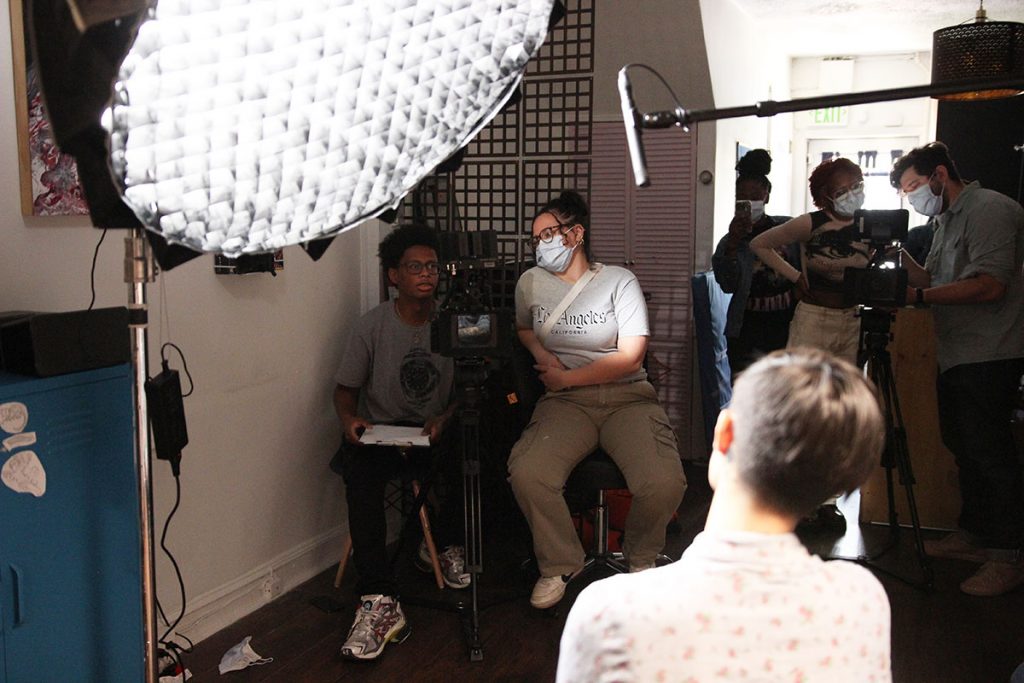
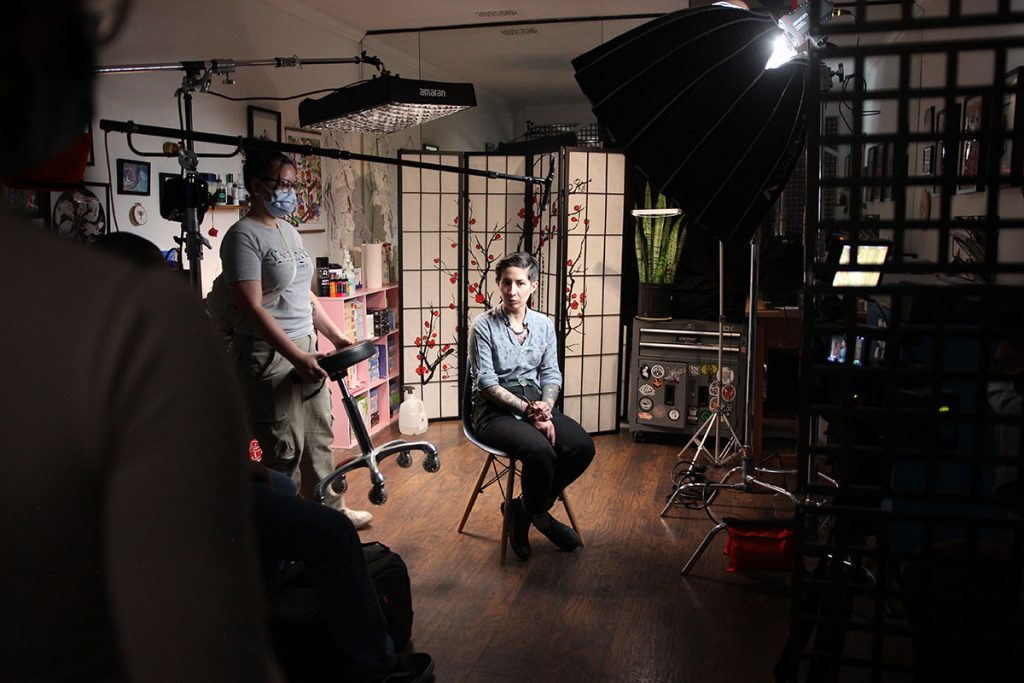
Insight into Production
Storytelling is a sanctuary for those who seek to capture the essence of life through the lens of a camera. At Wide Angle, apprentices discover untold narratives and capture those stories to share with the world. But to get there, every team member must find their role to play in the beautiful symphony of chaos that is a production set. On this day of filming for Baltimore Homecoming, apprentice and multimedia editor Kamaria Avery found her place as the interviewer.
Since she was a young child, Kamaria has had a special relationship with cameras. “I think I’ve always just had this obsession with documenting my experience,” Kamaria shares. “I think it might be some kind of subliminal fear of forgetting my memories or forgetting my life. So, it’s like a collection of my lived experiences. Art in general is taking your experiences and turning it into something else.”
When Kamaria first enrolled at Towson University, just north of Baltimore, her goal was to major in biology. Realizing she didn’t have a true passion for that type of science, she decided to switch to electronic media film and sociology. “I want to pursue this artist part of me that has always existed but I never prioritized.” Last year, she continued on that trajectory by joining the Wide Angle production team.
“Being in the apprenticeship and getting consistent work is what I needed in my journey as a videographer and filmmaker,” she says. Her development as a producer and editor so far is exceptional. Here she takes us through the production process of filming and interviewing for Baltimore Homecoming, a nonprofit organization that connects Baltimoreans around the world with city leadership and innovators.
The organization’s Homecoming Hero Awards program honors and rewards extraordinary city individuals, including nonprofit and community leaders, activists, artists, and inventors who have recently had a significant impact on Baltimore. Our team helped film promotion videos for each of the semifinalists to amplify their missions.
One of the many heroes who stood out to Kamaria was Iya Dammons, Baltimore Safe Haven’s first executive director and a trailblazing advocate for the LGBTQIA+ community. Iya’s passion is providing resources and safe spaces for LGBTQIA+ individuals, allowing them to live in their authentic truth.
“She’s helping a lot of trans youth in Baltimore, which I really respect. I was moved by it,” Kamaria says. “My sibling is trans, my uncle is trans. I’m just happy to see there are people like her who care about the people I care about, and they’re doing something about it.”

But, for Kamaria and other women filmmakers, the world of film production is not always a safe space. It is not uncommon for women in the industry to face numerous discriminatory barriers. There are fewer opportunities for women in the creative roles of directing, producing, and writing. According to San Diego State University research, the ratio of female writers increased from 13 percent in 1998 to 19 percent in 2022. In that same time, the proportion of women working as executive producers climbed from 18 to 25 percent. Women working as producers increased from 24 to 31 percent. While there has been progress, it’s too slow and still not enough. Fighting stereotypes and biases can be taxing work in an industry that has historically favored male perspectives and narratives.
“Those are some things I have to deal with, when I’m in those male-dominated spaces,” Kamaria says. On set at another organization, she experienced toxic masculinity and stigmatized dialogue among co-workers. “Before I would always want to address the sexist and derogatory conversations I overheard, but I realized my peace matters more. Sometimes it’s just not the time or place to have that kind of battle, although it can sometimes feel like, ‘Am I avoiding a responsibility?’ Because if I’m not having these conversations, then what’s going to change?”
In addition to professional obstacles, women often experience bias, harassment, and pay disparity in the workplace. Nevertheless, many women like Kamaria press on, hoping to alter the status quo, share more perspectives, and encourage the next generation of female filmmakers. Wide Angle takes pride in creating safe environments that welcome all people and reflects our city and society behind and in front of the camera.
Although there has been great progress in the representation of minoritized and marginalized communities in the media, there is much more to accomplish and many more groups to showcase.
“I’m Filipino, and you don’t see a lot of that in mainstream media,” Kamaria says. “It wasn’t until recently with Crazy Rich Asians, and then with Everything, Everywhere, All At Once, that we’re slowly getting more representation.”
“Being an Asian woman, I can’t ignore all the strong Black women that led the way to get us here,” she adds. “We don’t exist in a vacuum, and I believe in intersectionality. All of our issues are combined. Asian people cannot be represented if Black people aren’t represented as well. I’ll just have to work to hopefully get more representation and opportunities.”
Women like Kamaria are actively pursuing their passions in production, creating their own tables of opportunity to inspire the world. Like Brandon’s project highlighting Gina Takaoka and Wide Angle Productions’ recent Folklife Apprenticeship videos (part of an ongoing series for Maryland Traditions, a program of Maryland State Arts Council) focusing on stories like sharecropper-style quilting and Black doll-making, this field needs fresh perspectives from brave new voices who aren’t afraid to capture new stories that have been suppressed from our screens for far too long.
To other rising creatives, Kamaria advises, “Create! Just creating sometimes without an end goal could be a great exercise. Don’t be afraid to put your work out there and share it with people, because your art deserves to be seen.”
Take a look at the photo gallery below to learn more on how Kamaria tackles the production process. Watch the completed feature on Iya Dammons.
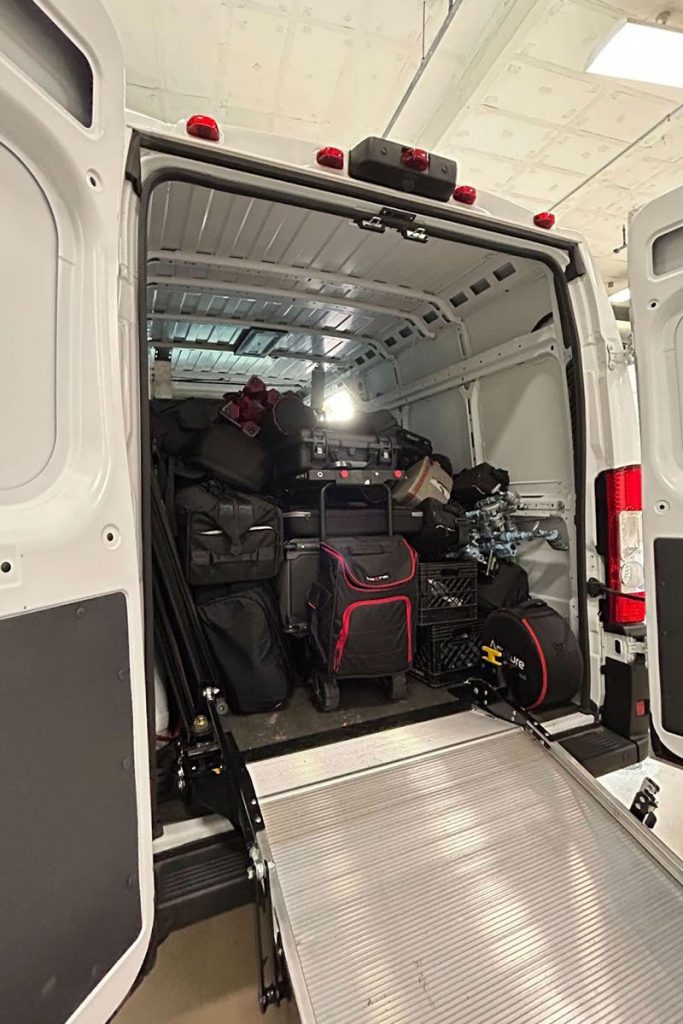
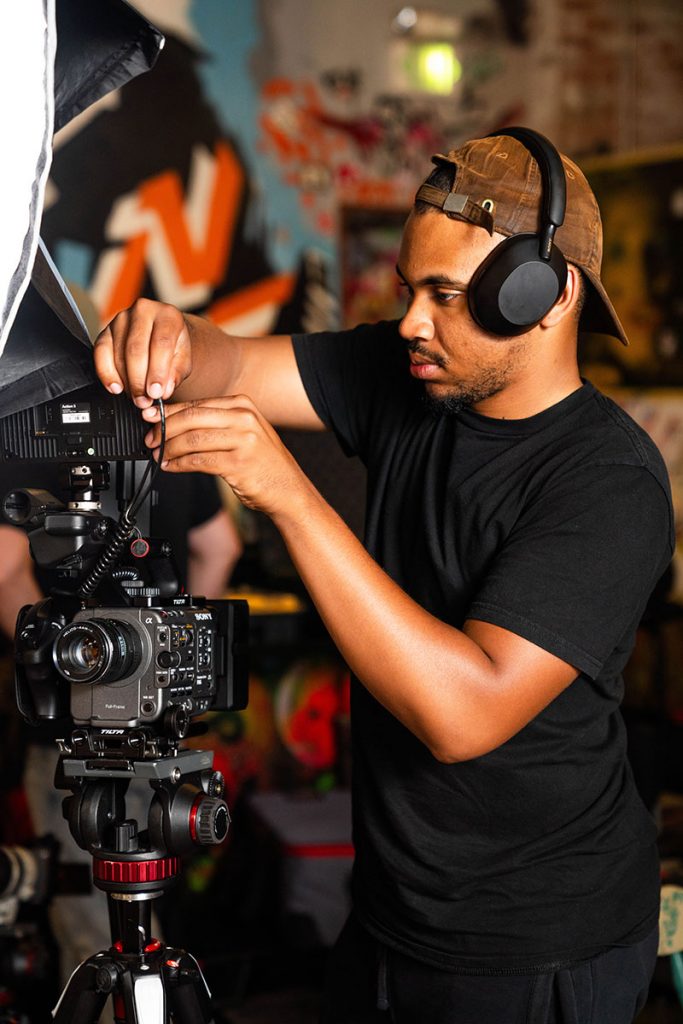
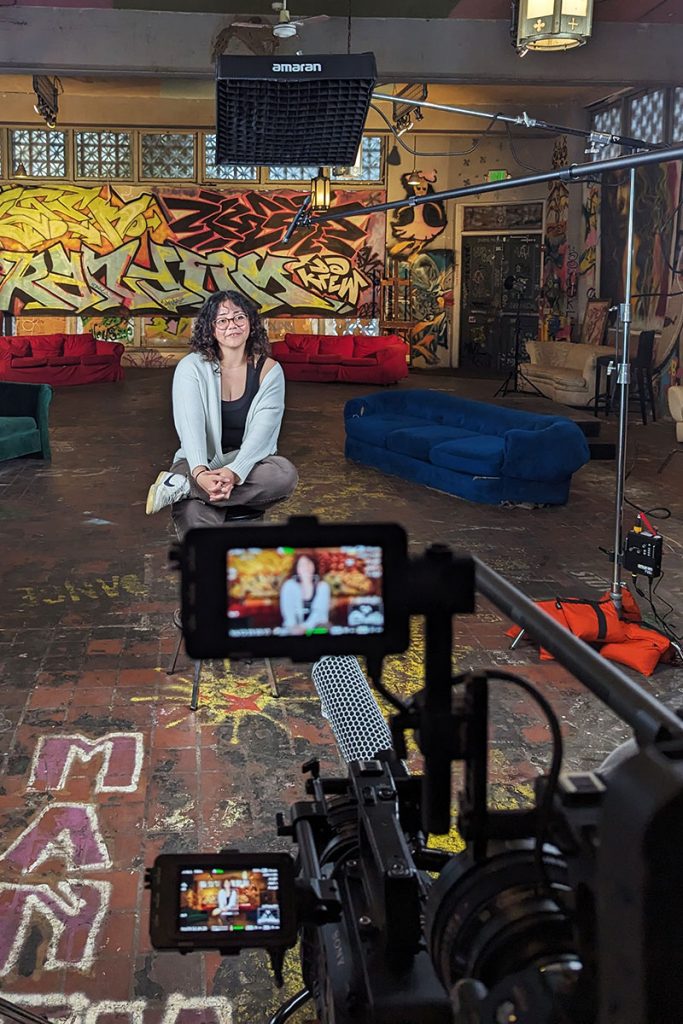
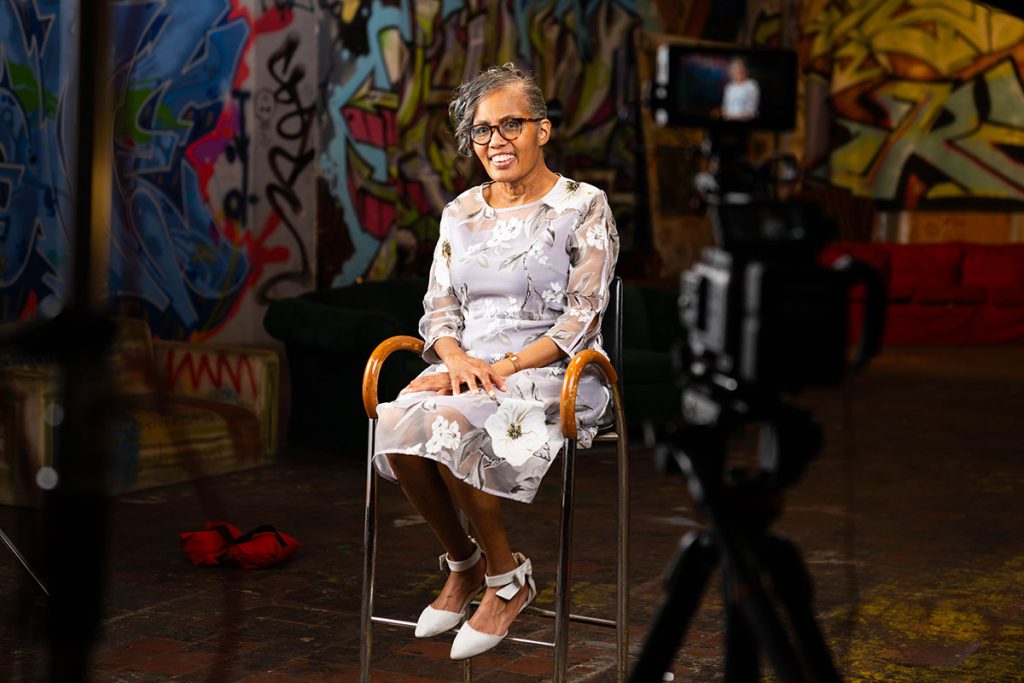
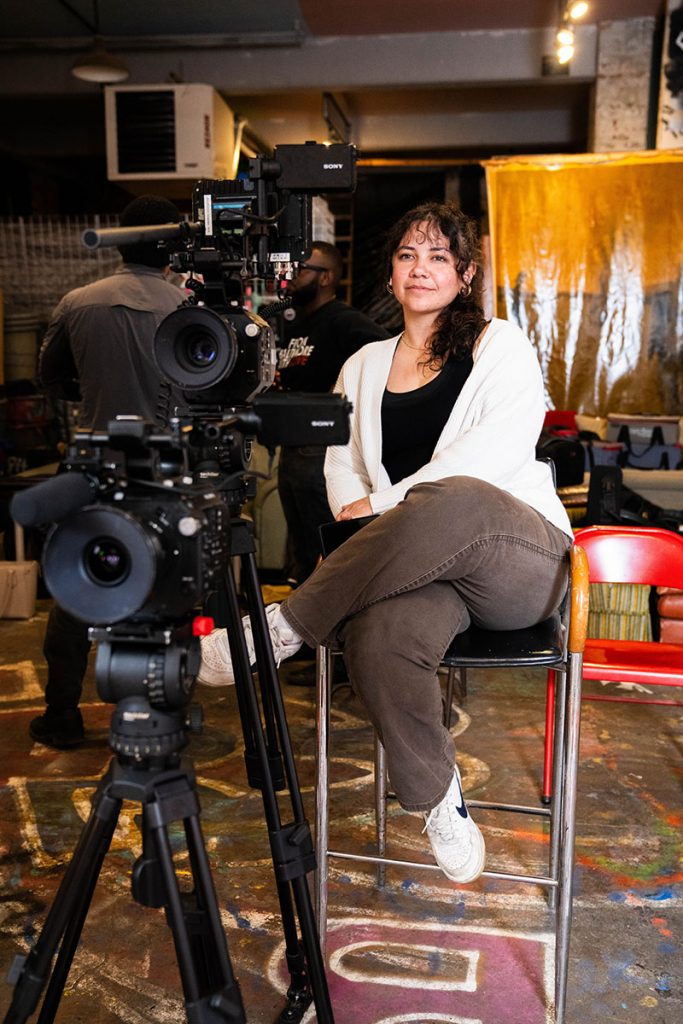
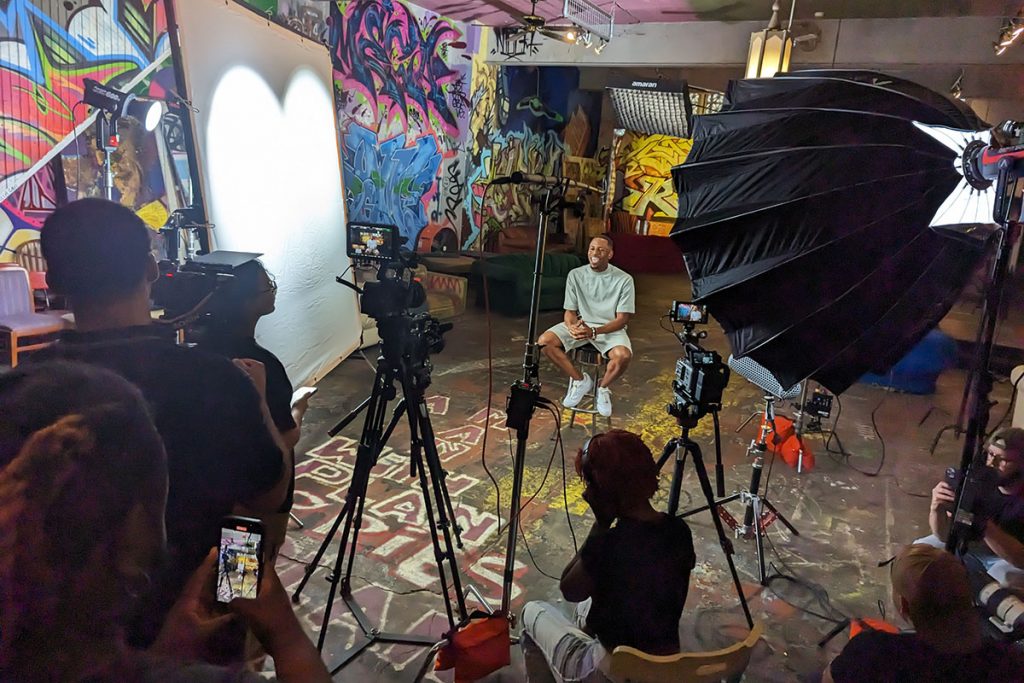
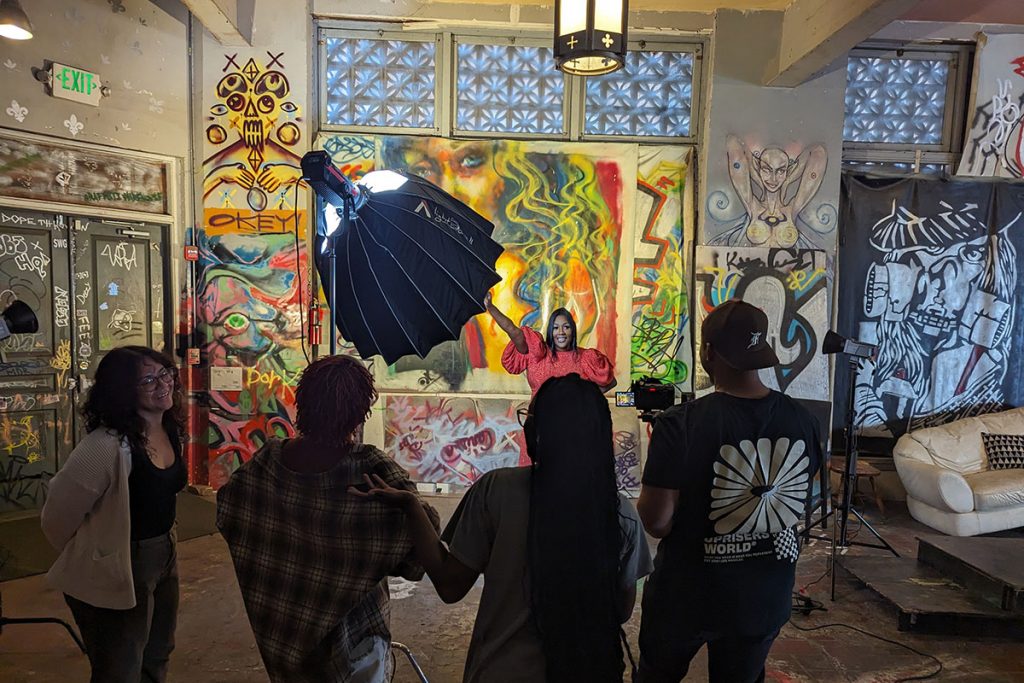
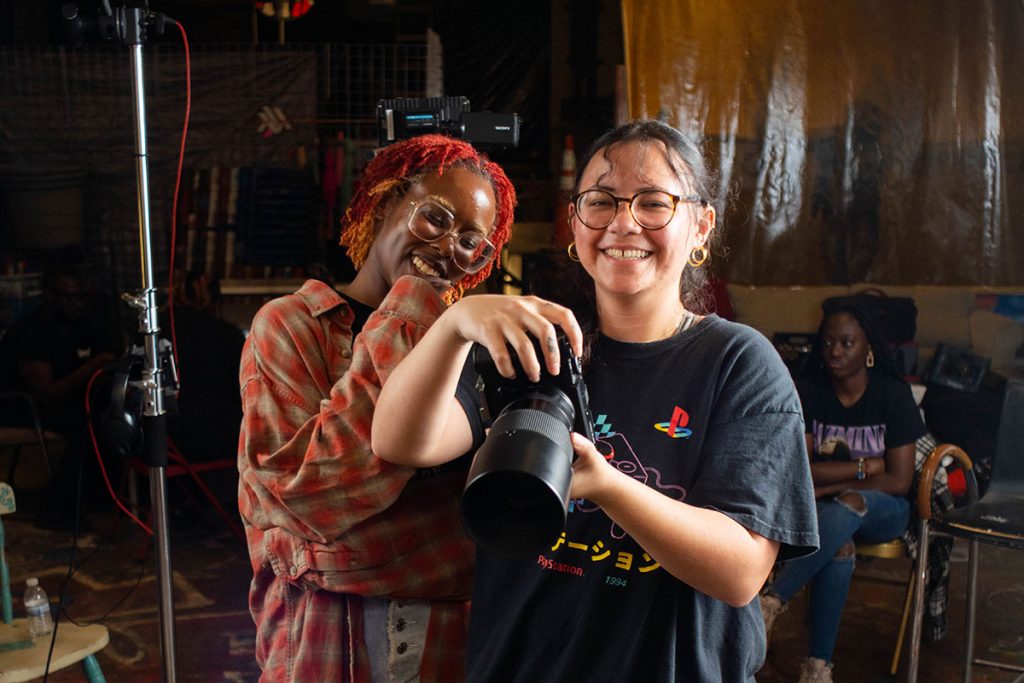
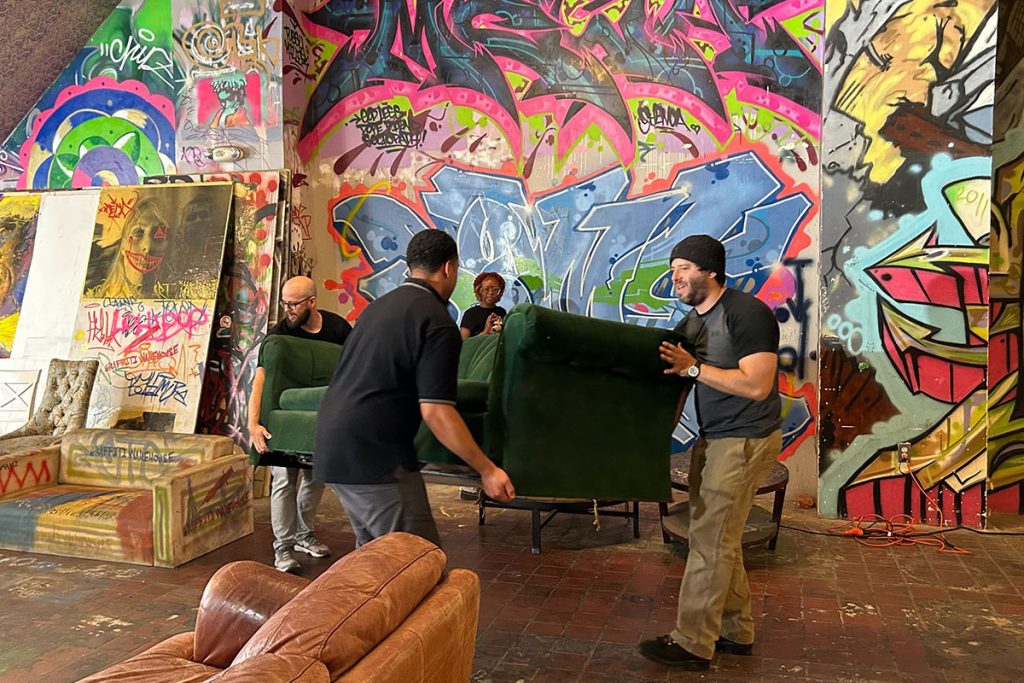
Insight into Post-Production
From a flicker of inspiration, the flame that has traveled from ideation to implementation finally finds its resting place in the editing room, where the project comes to life. Words, ideas, and sounds are intertwined into a testament of imagination, revealing the art of storytelling through media productions.
This past spring, Jeffrey Obike, age twenty-three, started his position as a multimedia producer Arts2Work apprentice. Although he was new to this role, he was no stranger to Wide Angle. Over a decade ago, he joined the organization’s middle school program, and his interest in mediamaking was piqued.
“When I learned how videos were edited, I realized it was something that I could do,” Jeffrey says. “I realized that I could use those skills in my personal life and bring them to projects with friends.” Moving on to our high school classes opened doors of opportunity for Jeffrey. By the time he graduated, he built a versatile portfolio which landed him in one of the best film programs in the country, at Columbia College Chicago.
Years of experience paved the way for Jeffrey as he established himself in his apprenticeship position at Wide Angle. He compares the editing process to “putting together a paper.” At this stage of the production process, editors take all the work from planning and filming and organize that content into a media product that has the potential to be consumed by millions of people.
Recently, Jeffrey took the lead on editing Wide Angle’s Capital Campaign video. Since he has such a long history with the organization and its media education opportunities, he felt particularly connected to the project. Witnessing the growth of the organization is a fulfilling experience for Jeffrey. He was involved in each step of the project, so when the time came to edit, he had a special interest in making sure the video lived up to what was envisioned.
Wide Angle recognizes the importance of fostering creativity and providing safe spaces for youth to express their perspectives across many platforms, such as graphic design, videography, acting, and animation. “Outside of Wide Angle, I’m a freelance video director and photographer,” Jeffrey says. “I like creating cool things. Getting paid for it is nice too. I’ve mainly been making music videos, but now I’m jumping into other ventures. I want to share my own stories and projects. I’m putting together a neo-noir action screenplay that’s in the pre-production process.”
Now Jeffery is using the skills gained during his apprenticeship to grow his own production company. His story reflects the possibilities and immeasurable potential in many young people all over the world.
“If you have an idea that you think is unique, there’s no telling who else is going to come up with the idea and when they’re going to do it,” Jeffrey advises. “So, don’t live in your head. Just create. Just keep on doing it.”
Discover more about post-production and peek into Jeffrey’s editing process by clicking on the slideshow.
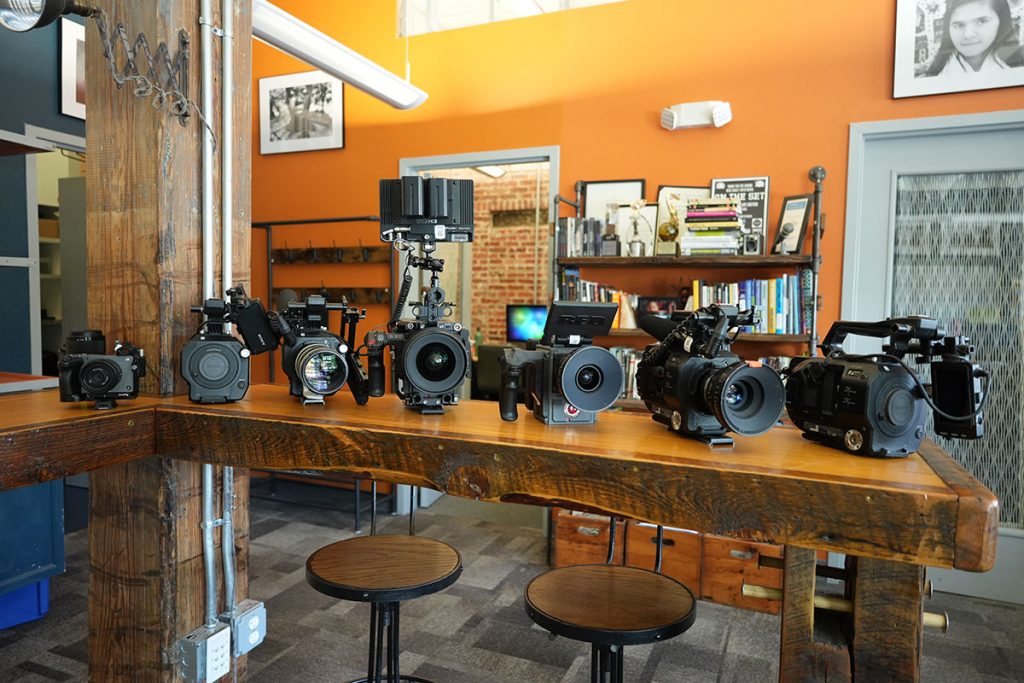
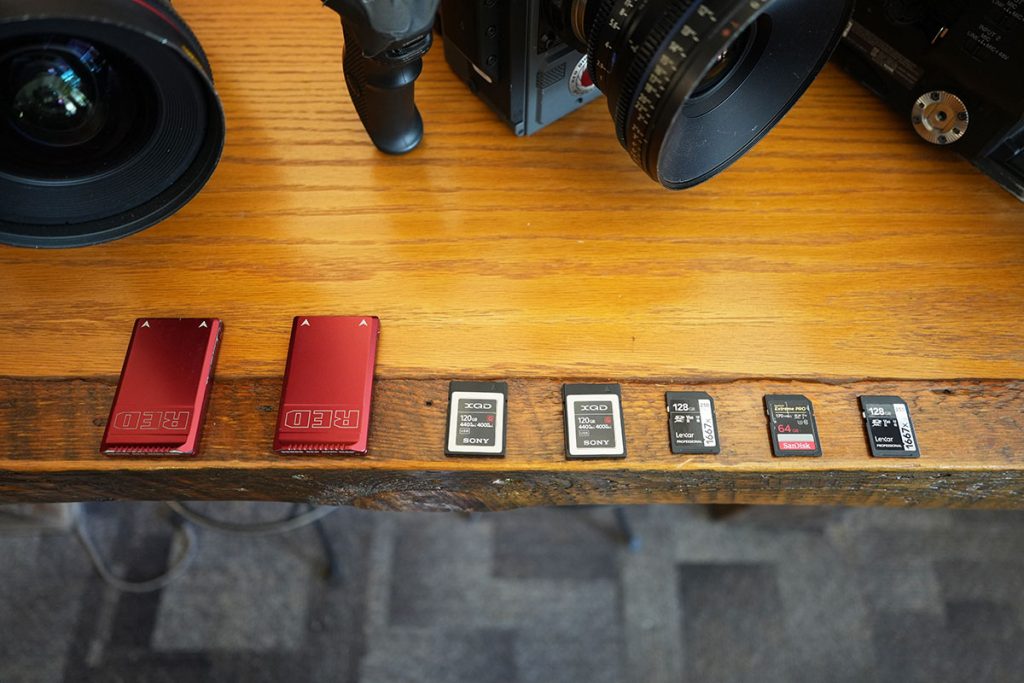
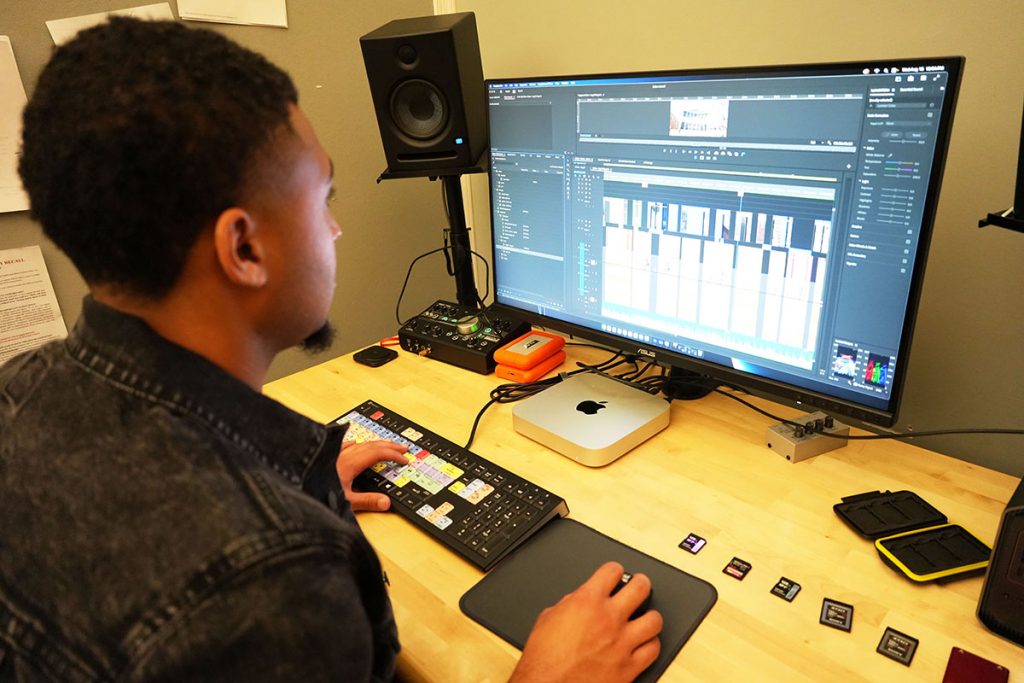
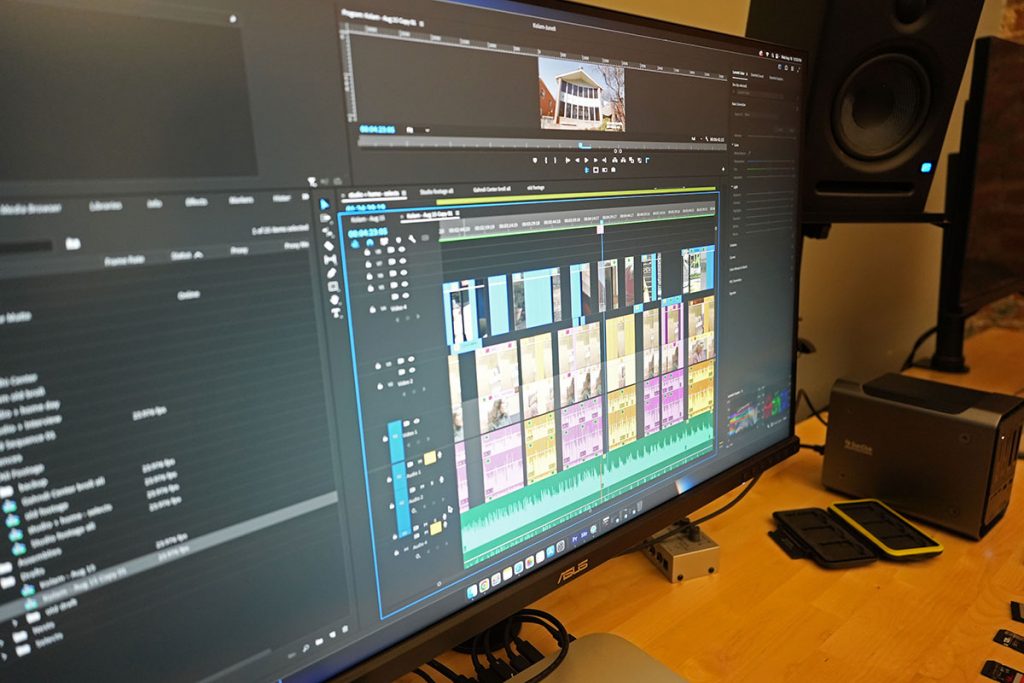
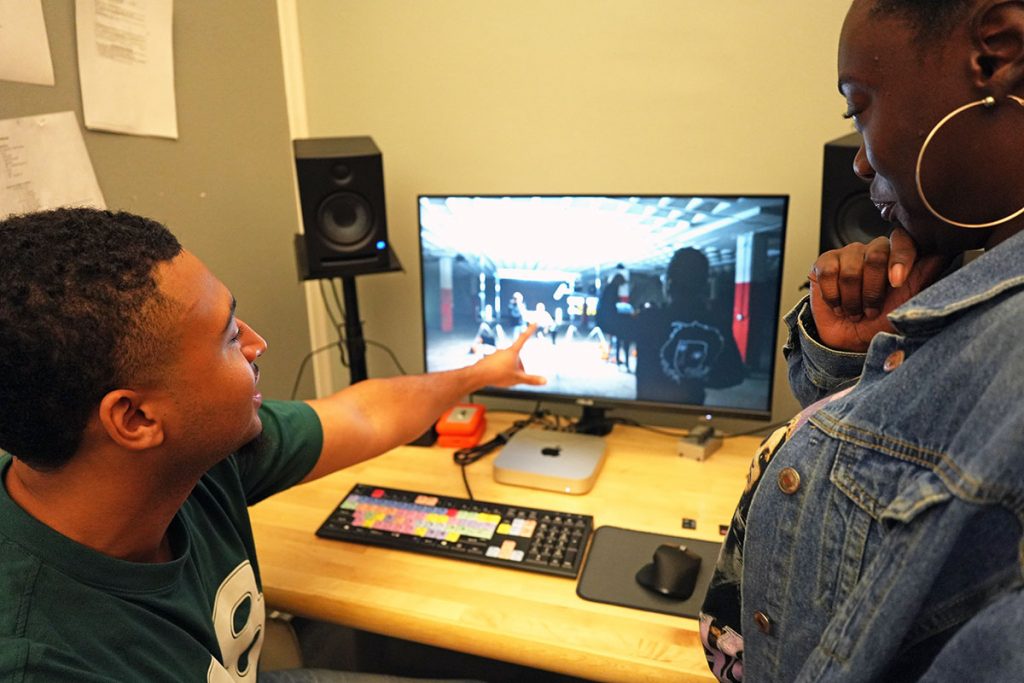
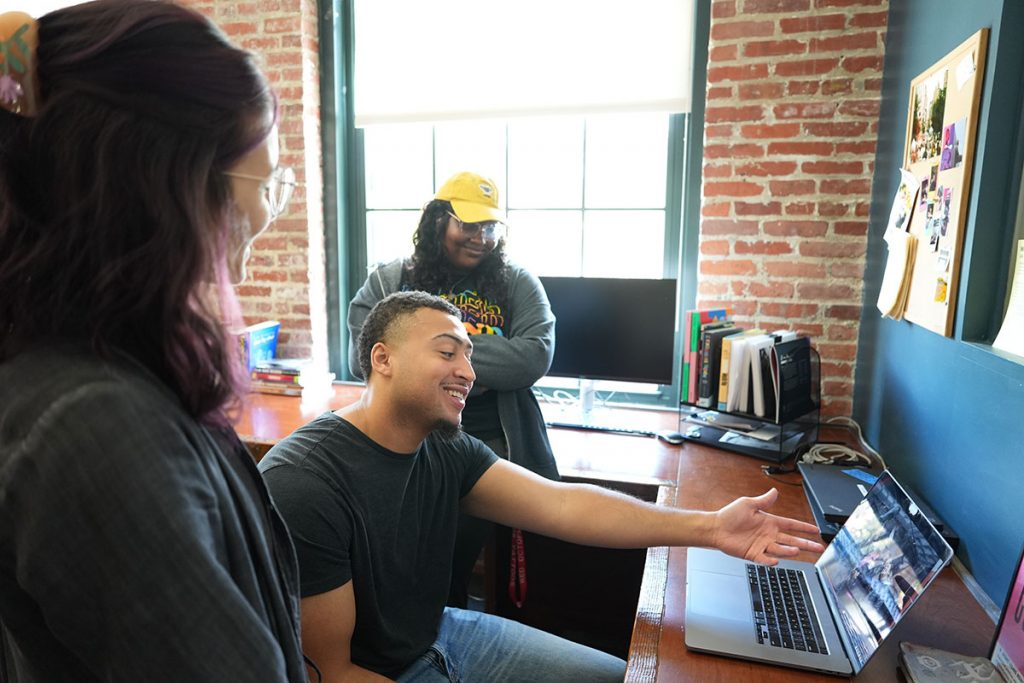
Wide Angle Youth Media’s team takes what has almost become a foreign concept in the United States—apprenticeships—and makes them a practical solution for learning in today’s fast-changing world. Young creatives like Brandon, Kamaria, and Jeffrey are assembling a toolbox while learning from practiced mentors who know what it takes to earn jobs and succeed in the world of media. In doing so, they tell artful stories that matter, human stories that spotlight underrepresented populations. Through their apprenticeship program, Wide Angle Youth Media works to change the face of video and film one success at a time.
Lacee Cottman is a Wide Angle Youth Media alum and a recent graduate of the University of Baltimore, where she earned a bachelor’s degree in psychology.
Hannah Shaw is a communications manager at Wide Angle Youth Media. She holds a BS in marketing from the University of Maryland and an MA in social design from Maryland Institute College of Art.




